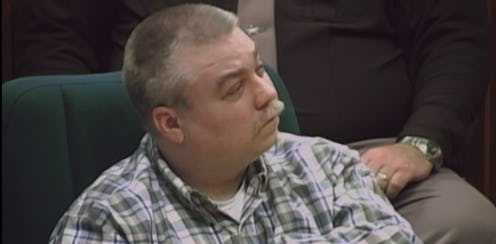News
The New Evidence Against Steven Avery

For weeks, people all over the world have been sifting through the facts of the Steven Avery murder trial, trying to discern for themselves what happened. With the release of the Netflix docuseries Making a Murderer in December, the debate has raged over whether Avery — who was wrongly convicted for sexual assault in 1985, and served 18 years before DNA evidence exonerated him — actually committed the 2005 murder of 25-year-old Teresa Halbach. In this time, some figures in the case have spoken out, and some big pieces of evidence against Steven Avery not covered in Making a Murderer have been revealed.
If you've watched the show already, then you probably already know a great deal of information about the evidence that was used to convict Avery, and how much of it was highly controversial. The documentary (told from the perspective of Avery's friends, family, and defense team) paints a picture of severe police misconduct, from conflicts of interest relating to Avery's multi-million dollar lawsuit against the county, to a narrow and targeted investigation, to allegations of planted evidence.
Ken Kratz, the district attorney for Calumet County, Wisconsin during the 2006 trial (who's also featured heavily in the documentary), forcefully denied these allegations at the time, and has spoken out recently, arguing that the filmmakers left out key pieces of evidence that pointed to Avery's guilt. So, what new facts do we have? Here are three prime examples.
1. Avery's Phone Calls To Halbach
Of the information that went unmentioned in Making a Murderer, Avery's three phone calls to Halbach on the day she disappeared — the first two with caller ID blocked — has made some news. Some think this proves that Avery had some manner of fixation or unique interest in Halbach, and had repeatedly contacted her the day of her disappearance to draw her to his property.
According to Avery's defenders, however, this is not some ironclad piece of incriminating information. On CBS This Morning, Avery's former defense attorney Jerry Buting argued that the calls are not significant, and that Avery had called her office to request that she come over. This does not look like something that somebody would do if they intended to commit a murder and conceal the evidence. Regardless, this is information that Making a Murderer didn't touch on, and even if it isn't damning, it doesn't help Avery's case.
2. The DNA Under The Hood
The hood of Halbach's car, that is. Her RAV4 was discovered tucked away in Avery's family's salvage yard, and inside were spots of blood, which were ultimately DNA tested and determined to have come from Avery. His defense team argued compellingly that the blood may have been planted, taken from a sample the county had in storage that had been apparently tampered with.
But the issue of the second place Avery's DNA was found, on the underside of the hood of Halbach's car, was never brought up. Obviously, if you believe that Manitowoc County authorities could have planted blood in Halbach's car, as well as planted the key to her car in Avery's bedroom (which was another argument the defense made very convincingly), it's not exactly hard to explain away this evidence, which might be why the documentary didn't mention it. As Strang stressed on CBS This Morning, the trial lasted more than 200 hours, and Making a Murderer ran just 10 one-hour episodes.
Since the documentary's release, however, Kratz has publicly stated that the DNA came from Avery's sweat, and stressed the absurdity of thinking law enforcement had a sweat sample to frame Avery with. Buting lambasted Kratz for this claim in an interview with People, claiming that Kratz should know he's being deceptive:
He is making statements he should know are untrue, like claims about Steven Avery’s ‘sweat DNA’ being found on the hood latch of the Rav4. There is no such thing as ‘sweat DNA.’ DNA is found in all nucleated cells, but there has never been a test to determine that a sample of DNA came specifically from perspiration.
3. The Chilling Allegations From Avery's Ex-Fiancée
The personal side of this story got a lot more complicated earlier this week, and not in a way that helped Avery's side of things. In an interview with HLN, Avery's former fiancée Jodi Stachowski, who's prominently featured in the documentary, said that she believes Avery killed Halbach because of his abusive and threatening behavior during their relationship. Avery's lawyers declined to comment on her claims, which are being made a decade after she the alleged abuse happened.
Stachowski called Avery a "monster," and said he beat her frequently and threatened to electrocute her while taking a bath (and that he claimed he'd get away with it). She said that he was so abusive that she once consumed rat poison so that she'd be taken to the hospital and get away from him. She also said that her supportive statements captured during the documentary were made under duress, and that Avery threatened to harm her if she didn't speak well of him.
Obviously, this could all be true and Avery could still be innocent of the murder. Or none of it could be true. While there's been no official comment from Avery about these allegations, Buting did address Stachowskis interview while speaking to Rolling Stone, saying: "She was getting a lot of pressure, even while the trial was going on, to try and turn her away from Steven Avery. It's many years, who knows what kind of pressure and influences have been exerted against her to try and make express that kind of opinion. Bottom line is that when things were contemporaneous, happening back during that time, she did not have that opinion. She was very supportive of him. So, why is she changing her opinion? I don't know at this point."
Images: Making a Murderer/Netflix (2); HLN